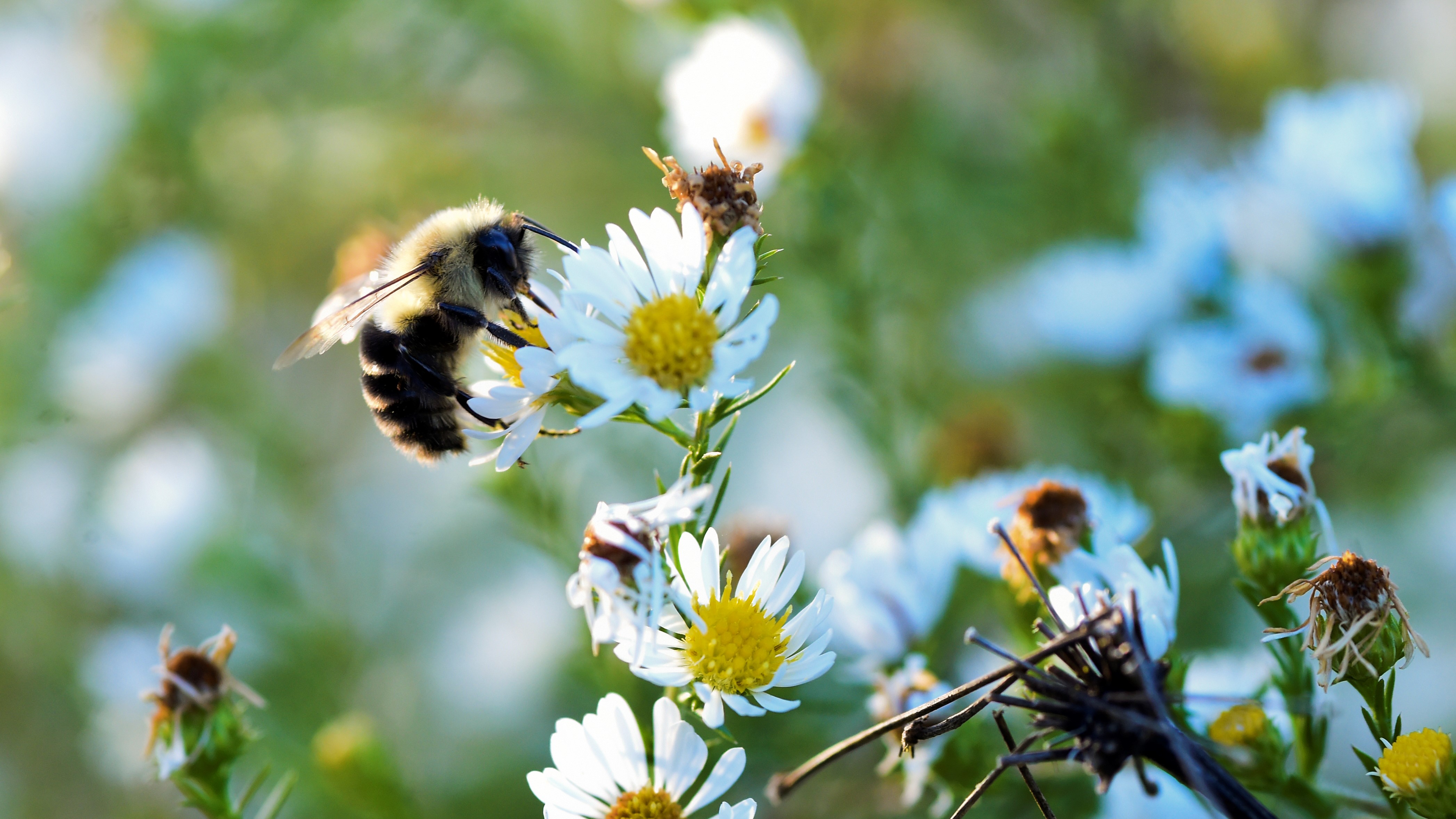American bumblebee could be officially declared endangered
The species' population has dropped by 89% in the past 20 years.

The American bumblebee (Bombus pensylvanicus) population has plummeted by 89% over the past 20 years, and an "endangered species" listing could be imminent, according to the U.S. Fish and Wildlife Service.
The agency will conduct a one-year review, after which the species could become protected under the Endangered Species Act (ESA), which provides a legal framework for safeguarding imperiled species from extinction.
The announcement comes in response to an August 2021 petition in support of the listing made by the Center for Biological Diversity (CBD) and an Albany Law School student group called Bombus Pollinator Association of Law Students.
Related: In photos: The world's most efficient pollinators
According to the CBD, the American bumblebee — a vital pollinator of wildflowers and crops across North America — has completely vanished from eight U.S. states — Maine, New Hampshire, Rhode Island, Vermont, Idaho, North Dakota, Oregon and Wyoming — and in New York state, the species has experienced a population decline of 99%. In 19 other states across the Southeast and Midwest, populations have dropped by more than 50%.
"The American bumblebee was once the most common bumblebee species in North America, but without immediate action to protect it under the ESA, it will continue its alarming decline towards extinction," the petition authors wrote.
The bumblebee's decline is attributed to habitat destruction, exposure to disease and pesticides, climate change, loss of genetic diversity and competition with non-native bees, according to the CBD. In fact, the states with the largest declines in American bumblebee populations "are the same states that have seen the largest quantified increase in pesticide use, including neonicotinoid insecticides and fungicides."
Sign up for the Live Science daily newsletter now
Get the world’s most fascinating discoveries delivered straight to your inbox.
Research has shown that chemical pesticides, such as neonicotinoids, that are commonly sprayed over agricultural land can disrupt various bees' natural homing systems; make them more susceptible to parasites, such as the varroa mite (Varroa destructor); and interfere with their "waggle dance" — the butt-shaking method of bee communication. A further study conducted on buff-tailed bumblebees (Bombus terrestris) found that neonicotinoids disrupted the bees’ natural sleep patterns, reducing their daytime foraging opportunities and potentially limiting a colony’s ability to grow.
If American bumblebees are placed under the protection of the ESA, developers and farmers who kill the insects could incur legal liability — including fines up to a maximum of $13,000 each time a protected animal is killed.
"The implications could be really significant," Keith Hirokawa, an environmental law professor at Albany Law School, told Bloomberg Law. "A far-reaching solution would be a fundamental change in the way we build our agricultural operations," to protect the bees' habitat from further damage.
If the American bumblebee is added to the list, it would become the third species in the Apidae family in the continental United States to be officially registered as an endangered species — alongside the rusty-patched bumblebee (Bombus affinis) and the presumed extinct Franklin's bumblebee (Bombus franklini), the last sighting of which was in Oregan in 2006.
Originally published on Live Science.

Ben Turner is a U.K. based staff writer at Live Science. He covers physics and astronomy, among other topics like tech and climate change. He graduated from University College London with a degree in particle physics before training as a journalist. When he's not writing, Ben enjoys reading literature, playing the guitar and embarrassing himself with chess.










